Armyworm primarily feed on grasses. As seen in the past, and now being reported this spring, they will feed on no-tilled soybean into a cereal rye cover crop.
Armyworm primarily feed on grasses. As seen in the past, and now being reported this spring, they will feed on no-tilled soybean into a cereal rye cover crop.
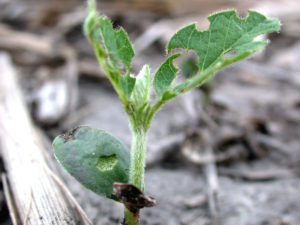
A few soybean fields were planted early, and they are not only emerged, but well into the V-growth stages. Producers are just now finding that these “islands” of legumes have become a trap-crop for bean leaf beetle activity early this season.
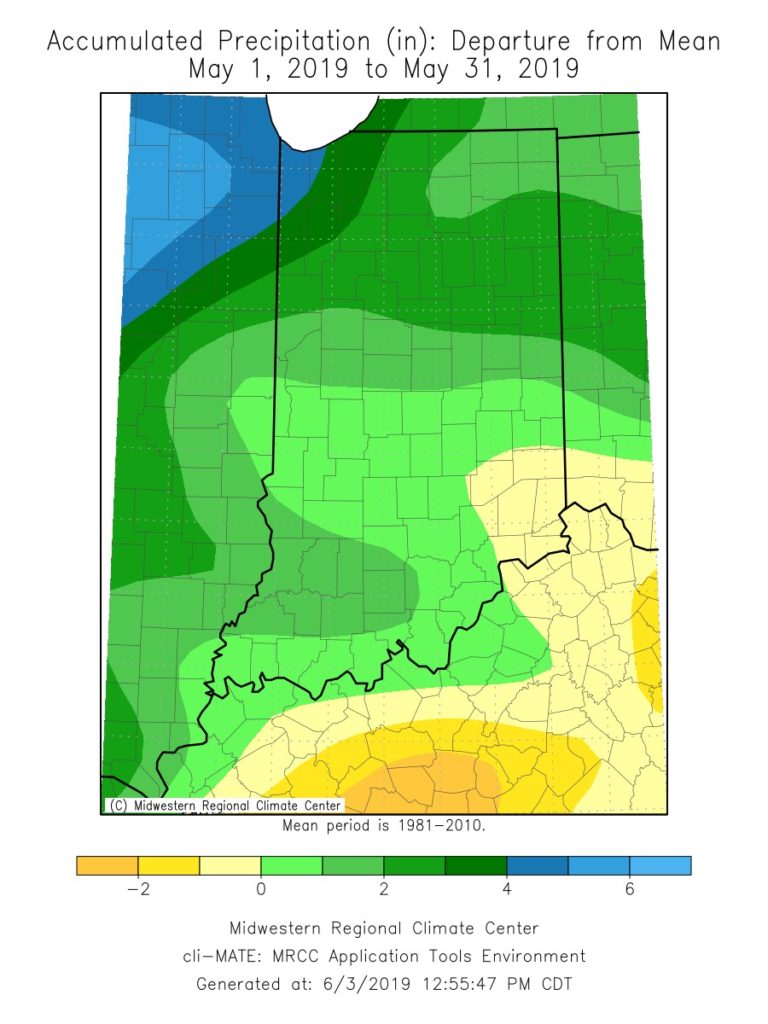
As we close the doors on May for the year, one of the biggest stories throughout the month was the precipitation. The entire state was above normal. Northwestern Indiana was 3.41” above normal and southeastern Indiana was 0.18” above normal for the month (Figure 1). Temperatures were near normal in the northern and above normal in the central and southern tiers of the state. Some stations in Central Indiana recorded rainfall on 24 out of 31 days.
The Purdue Pest Management Program has made 3 videos available which address this year’s late-planting season. You can find them on YouTube using the following links:
Part 1 of 3: Historical Indiana Planting Dates and Yield Trends
https://youtu.be/rUhfkWcNXOQ
Part 2 of 3: Late Corn Planting Considerations
https://youtu.be/qlrn42V8dyI
Part 3 of 3: Late Soybean Planting Considerations
https://youtu.be/Lwr9kIOE84o
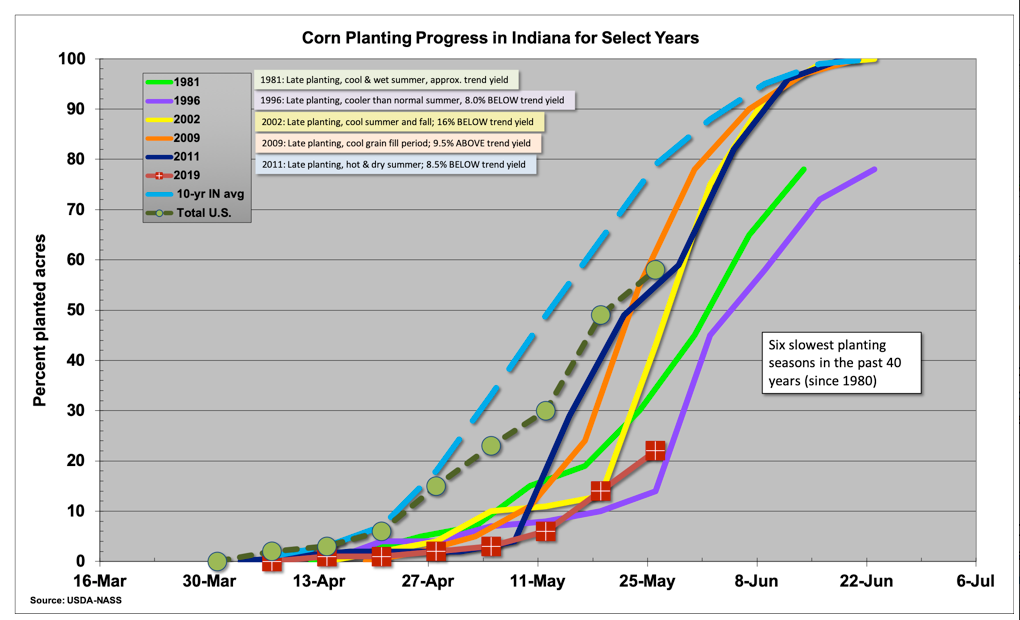
As May transitions to June, many Indiana corn growers are faced with substantial acreage yet to plant. Statewide, as of May 26 (USDA-NASS, 2019), only 22% of the state’s corn crop was estimated to have been planted. That disappointing planting progress positions the 2019 planting season AT THE MOMENT just slightly ahead of the similarly slow 1996, which currently holds the unenviable record for the most delayed planting season in the past 40 years. AND, there is still a chance we will surpass (or should I say “fall behind”?) that record by the time this planting season is finished. In the remaining days of May, thunderstorms continued to rumble across the state… sometimes across the north… sometimes across the south… sometimes through the central counties. Unless a rapid shift from rainy to sunny, warm, and windy occurs soon, the prospects of serious planting progress through the first week of June[Read More…]
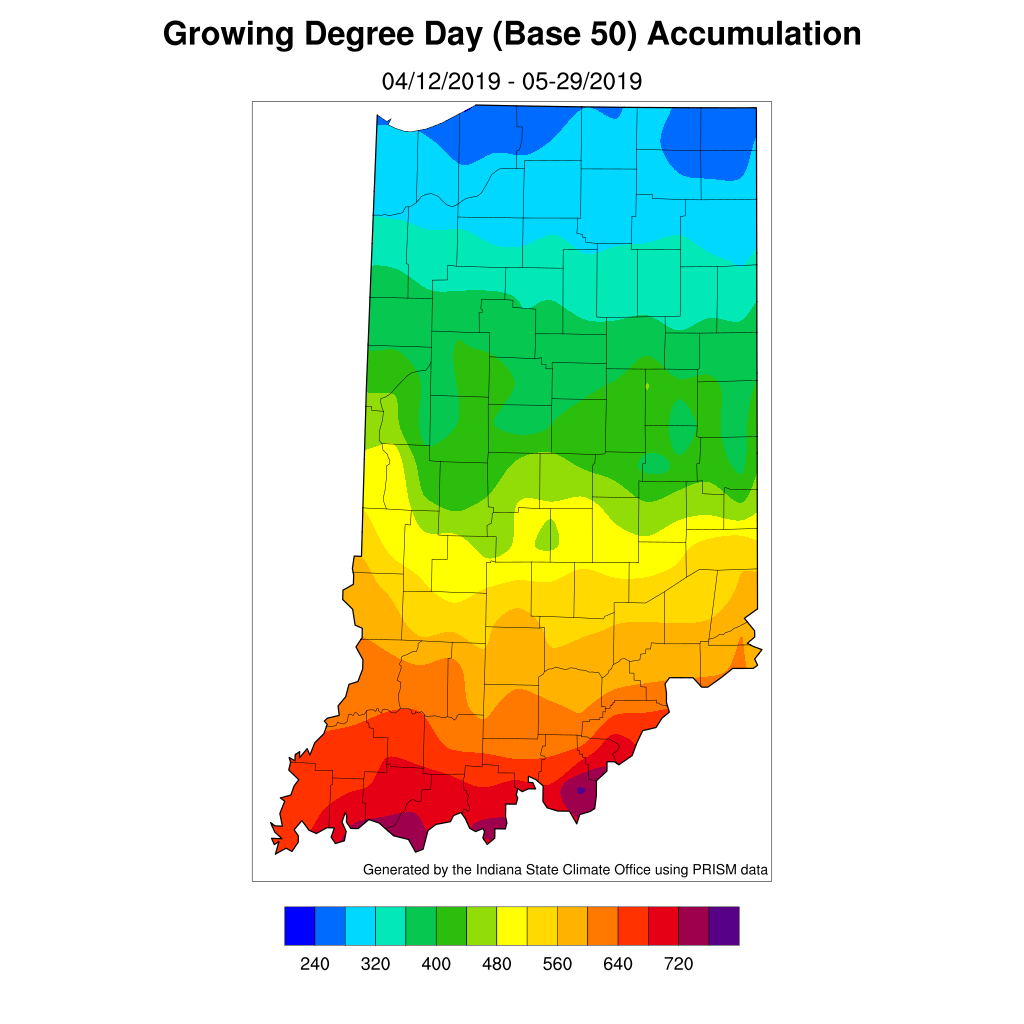
The early intensive black cutworm flights into Indiana, 2nd week of April, have now received enough heat accumulation for larva to have developed to the cutting stage throughout the state.

As demand for organic grain products soars, newly certified organic grain farmers — or those in the process of transitioning to organic grain — struggle to find reliable technical service and support as they navigate this new production system.
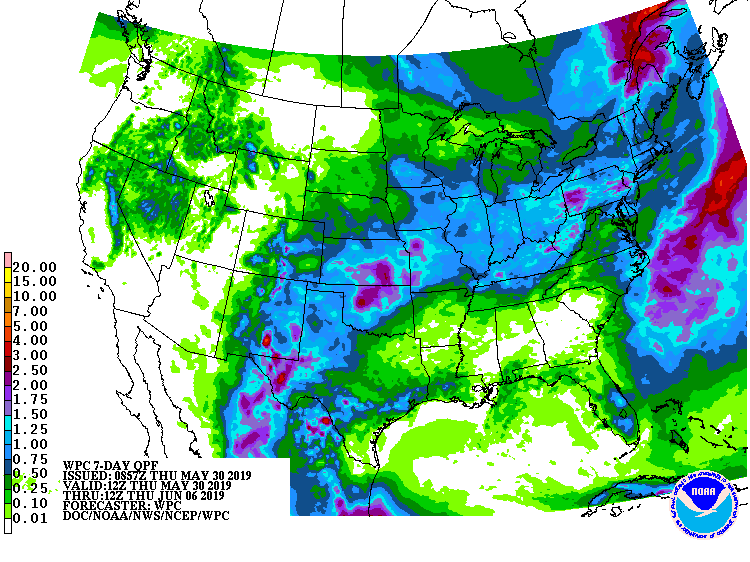
The story of excessive rain and soil moisture continues and the 7-day precipitation forecast suggests this wet pattern will continue (Fig. 1). When looking at the precipitation percent of mean for May 1-30, 2019, the southern half of the state received near normal amounts.
Planting cover crops on prevented planting acres can be a good way to improve soil health after the excessive water this spring and can help with weed control on otherwise fallow land.
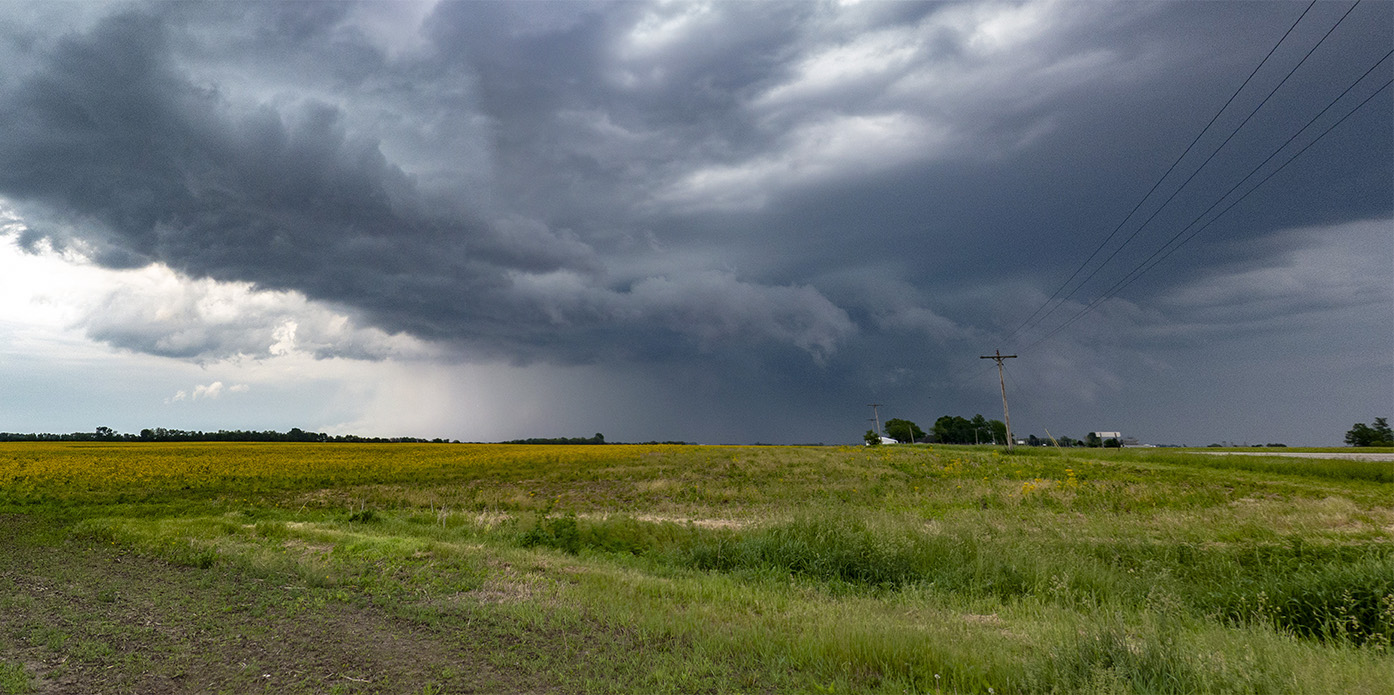
Armyworm Pheromone Trap Report – 2019
© 2025 Purdue University | An equal access/equal opportunity university | Copyright Complaints | Maintained by Pest&Crop newsletter
If you have trouble accessing this page because of a disability, please contact Pest&Crop newsletter at luck@purdue.edu.